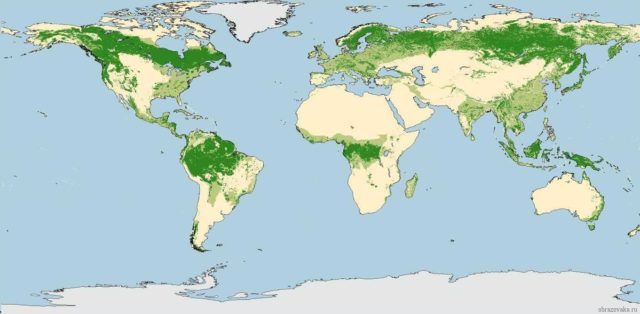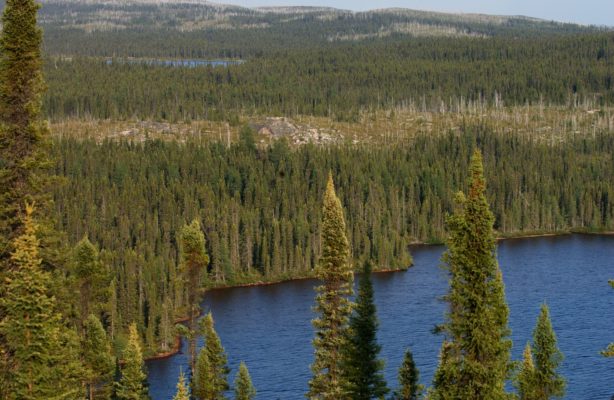Forest zones are the most extensive on Earth. There are several types of forests depending on the climatic zone.
Types of forest zones
Forest natural zones are found in three climatic zones, each with several varieties.
Table. Forest types
Each species is represented by its own tree species.

Rice. 1. Forests occupy a significant part of the land
temperate forests
Taiga is located in the north of America and Eurasia. This is a zone of coniferous forests. There are two types of taiga:
- light coniferous;
- dark coniferous.
Light coniferous taiga is represented by pine and larch forests, which are undemanding to natural conditions.
These tree species can grow even on permafrost.
Shrubs here are represented by the following varieties:
- alder;
- dwarf birches;
- polar birches and willows;
- berry bushes.
The light coniferous taiga is located on the territory of Eastern Siberia, Canada, and northern Eurasia.
In the European part of Russia, North America, dark coniferous taiga is common. Spruces, firs and cedars grow here. The lower tier consists of berry bushes and ferns.

Rice. 2. Taiga is one of the largest forest belts
Mixed forests occupy a narrow strip in the following areas:
- US-Canada border;
- north of Eurasia;
- Kamchatka, Far East.
Here are various tree species - coniferous, broad-leaved, small-leaved. In the Far East, monsoon forests are characterized by an abundance of lianas and multi-layered. Pine, fir, aspen, birch grow in Western Siberia. Maple, elm, beech, birch grow in North America.
Another natural zone is the broad-leaved forest - located in the eastern part of North America, in Central Europe, in the Crimea and the Caucasus. The following tree species grow here:
- ash;
- hornbeam;
- maple;
- Linden.
Forests of the subtropical zone
Hard-leaved foxes are located in southern Europe, northern Africa, southern Australia. They are characterized by a tiered structure and many vines. The following tree species grow here:
- heather;
- myrtle;
- holm and cork oak;
- arbutus;
- eucalyptus.
These trees are well adapted to life in drought conditions. The lower tier is represented by thorny shrubs.
Monsoon forests are located in the eastern regions of the continents, characterized by the highest humidity. They are represented by evergreen and deciduous tree species:
- subtropical pine;
- magnolias;
- camellias;
- laurel;
- cypress.
Monsoon forests are cut down by man to free up areas for agriculture.
Tropical forests
Seasonally wet and permanently wet forests are located north of the equator. They are represented by eucalyptus, teak, various types of palm trees. There is a large number of vines and shrubs. What areas are covered by these forests? They grow in Australia, on the islands of the Caribbean.
The equatorial zone contains the wettest forests. Due to the fact that there is no change of seasons at the equator, and the temperature is constantly in the range of 24-28 degrees Celsius, the vegetation here is evergreen.
Various types of palms, ficuses, cocoa trees grow here. There are a lot of shrubs and vines here.
